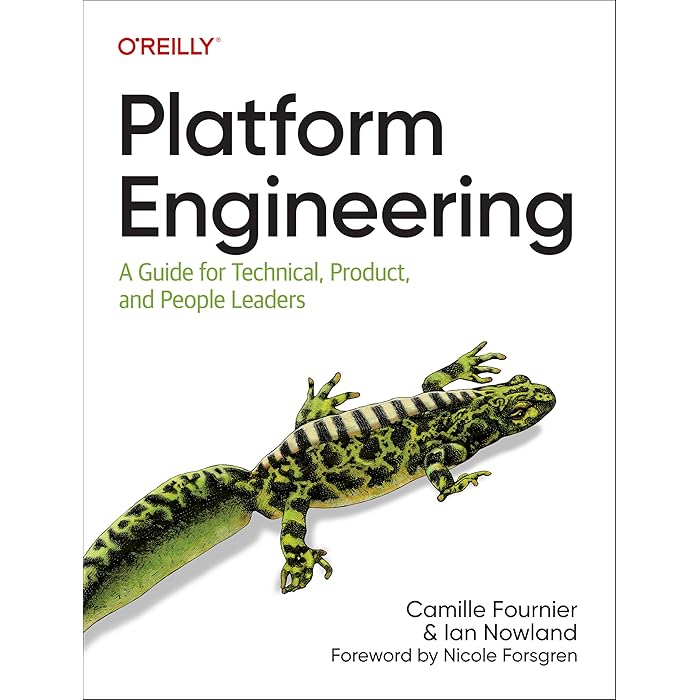Description
**”Platform Engineering: A Guide for Technical, Product, and People Leaders”** is a comprehensive resource designed to guide organizations in the modern era of software development, where building robust, scalable, and secure internal platforms is key to fostering efficiency and innovation. It targets three distinct leadership groups: technical leaders (e.g., engineers, architects), product leaders, and people leaders (e.g., managers, team leads), each playing a crucial role in platform engineering’s success.
Here’s an outline of what such a guide might typically cover for each leadership role:
### 1. **For Technical Leaders (Engineers, Architects, DevOps)**
– **Understanding Platform Engineering**: A clear definition of what platform engineering means today, contrasting it with traditional IT operations or infrastructure teams. The focus is on building reusable, self-service internal platforms that empower product teams and streamline their workflows.
– **Platform Design Principles**: Key considerations when designing a platform, including scalability, security, automation, and extensibility. The use of microservices, containerization, and cloud-native technologies are often highlighted.
– **Tooling and Technologies**: Overview of popular tools used in platform engineering, such as Kubernetes, Terraform, CI/CD pipelines, and various observability and monitoring tools. How to integrate these into a unified platform strategy.
– **Infrastructure as Code (IaC)**: Detailed guidance on using IaC to automate and manage the underlying infrastructure and ensure consistency across environments.
– **Collaboration with Product Teams**: How platform engineers can work closely with product teams to ensure the platform meets their needs without sacrificing reliability or maintainability.
### 2. **For Product Leaders (Product Managers, Technical Program Managers)**
– **Aligning Platforms with Product Strategy**: How to align the development of internal platforms with broader organizational goals and product roadmaps. This includes prioritizing platform features that directly benefit product teams, such as reducing the time to market or enabling faster experimentation.
– **Productizing Internal Platforms**: Treating internal platforms like products, including creating a roadmap, gathering feedback from users (e.g., developers), and ensuring the platform is flexible and user-friendly.
– **Measuring Success**: Defining and tracking key performance indicators (KPIs) that measure the effectiveness of the platform in terms of adoption, developer productivity, uptime, and scalability.
– **Balancing User Needs with Technical Constraints**: Understanding the trade-offs between adding features that product teams want and ensuring that the platform remains maintainable, secure, and performant.
### 3. **For People Leaders (Managers, Team Leads, HR)**
– **Building and Scaling Teams**: Best practices for hiring and growing a platform engineering team. This includes defining roles (e.g., platform engineer, SRE, DevOps) and fostering a culture of collaboration between cross-functional teams.
– **Creating a Culture of Shared Ownership**: Encouraging a mindset where platform engineers, developers, and product teams collaborate closely and share responsibility for the platform’s success.
– **Training and Skill Development**: Investing in training programs to ensure team members are up to date with the latest technologies and best practices in platform engineering.
– **Feedback Loops and Continuous Improvement**: How to implement a feedback system that ensures the platform evolves to meet the needs of developers and end-users over time.
– **Aligning Platform Engineering with Organizational Goals**: Ensuring that platform engineering efforts are aligned with the company’s mission and vision, and demonstrating how platform teams contribute to the broader success of the company.
### Additional Key Concepts
– **Self-service Platforms**: The concept of providing internal teams with self-service capabilities that reduce bottlenecks and allow engineers to focus on coding and innovation rather than operational concerns.
– **DevOps and Platform Engineering Synergy**: Exploring how DevOps practices integrate with platform engineering to automate operations and enhance continuous delivery pipelines.
– **Security and Compliance**: Building security and compliance into the platform from the beginning to mitigate risks and reduce the burden of regulatory adherence for product teams.
– **Observability and Monitoring**: Implementing robust monitoring, logging, and alerting systems to ensure platform health and provide the necessary insights for troubleshooting and performance optimization.
– **Cloud-Native Approaches**: Leveraging the cloud to provide scalable infrastructure, distributed architectures, and managed services that simplify platform operations.
### Conclusion
The goal of **Platform Engineering** is to create a robust and reliable foundation that accelerates product development by empowering teams with the right tools, infrastructure, and support. Each leader’s role is vital in ensuring the platform serves the organization’s strategic needs while also being adaptable enough to accommodate new requirements as the business evolves.





















Reviews
There are no reviews yet.